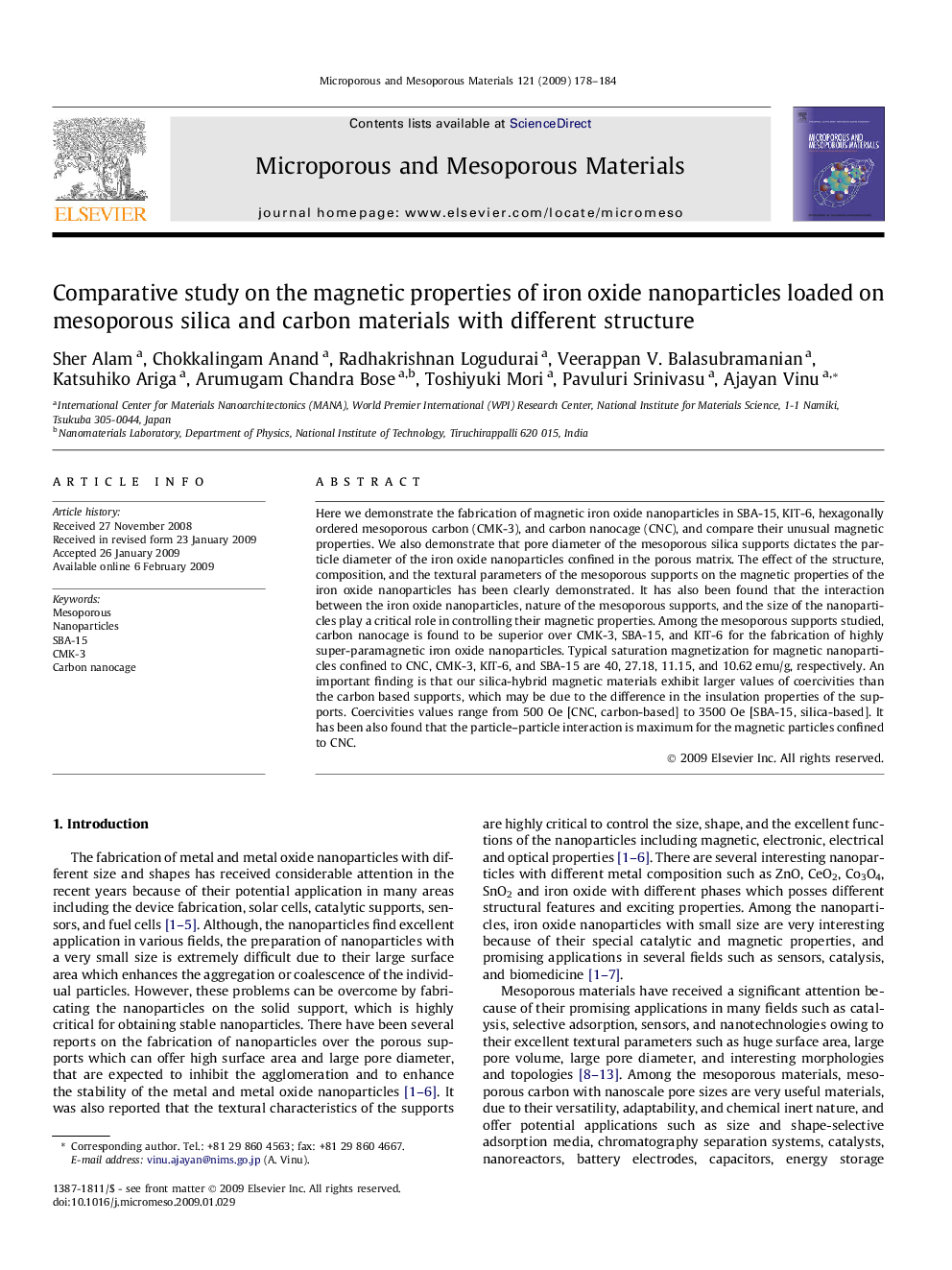| Article ID | Journal | Published Year | Pages | File Type |
|---|---|---|---|---|
| 76053 | Microporous and Mesoporous Materials | 2009 | 7 Pages |
Here we demonstrate the fabrication of magnetic iron oxide nanoparticles in SBA-15, KIT-6, hexagonally ordered mesoporous carbon (CMK-3), and carbon nanocage (CNC), and compare their unusual magnetic properties. We also demonstrate that pore diameter of the mesoporous silica supports dictates the particle diameter of the iron oxide nanoparticles confined in the porous matrix. The effect of the structure, composition, and the textural parameters of the mesoporous supports on the magnetic properties of the iron oxide nanoparticles has been clearly demonstrated. It has also been found that the interaction between the iron oxide nanoparticles, nature of the mesoporous supports, and the size of the nanoparticles play a critical role in controlling their magnetic properties. Among the mesoporous supports studied, carbon nanocage is found to be superior over CMK-3, SBA-15, and KIT-6 for the fabrication of highly super-paramagnetic iron oxide nanoparticles. Typical saturation magnetization for magnetic nanoparticles confined to CNC, CMK-3, KIT-6, and SBA-15 are 40, 27.18, 11.15, and 10.62 emu/g, respectively. An important finding is that our silica-hybrid magnetic materials exhibit larger values of coercivities than the carbon based supports, which may be due to the difference in the insulation properties of the supports. Coercivities values range from 500 Oe [CNC, carbon-based] to 3500 Oe [SBA-15, silica-based]. It has been also found that the particle–particle interaction is maximum for the magnetic particles confined to CNC.
